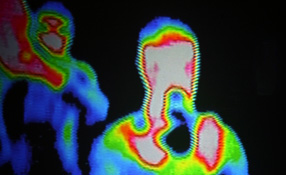 |
| H.264 has become the compression standard of choice in the security industry |
The rising popularity of the H.264 video compression standard has established H.264 as ‘the buzzword' within the video surveillance industry. With all this talk of the possible enhancements brought to the fore by H.264, Kate Huber, Peter de konik and Piet Nieuwets of Optelecom-NKF present the true benefits and shortcomings of this popular standard in the first of a three-part review.
H.264 takes the world of video streaming by storm
A Saturday night in front of the TV maybe doesn't make you think of video streaming standards any more than watching a bridge go up automatically or getting caught on a traffic camera for running a red light do. But video streaming is what makes it possible to safely open bridges from a control center and secure the streets as much as it is what lets you put your feet up and forget the world for awhile with your favorite film.
Since 1995, the video streaming standard of choice for TV broadcasting and DVD video has been MPEG 2. Its successor, MPEG-4 part 2, expanded the possibilities of MPEG-2 in 1998, creating a streaming standard that has largely been adopted by the computer industry. But the buzzword in the world of video streaming these days is H.264, a.k.a. MPEG-4 part 10. Everybody developing or distributing codecs either already supports it or will very soon. But just what exactly is H.264 and what is so special about it?
Creating a new video compression standard- a brief history of H.264 |
| View larger image |
A flexible video compression standard
The H.264 video compression standard sets the requirements for formatting compressed video so as to provide improved video quality at lower bit rates than preceding standards. However, it doesn't actually specify how codecs should go about encoding video streams. It only defines how decoders should function and the tools and mechanisms that may be used, giving this standard unparalleled flexibility and allowing developers to contend for the most efficient encoding.
Still, H.264 isn't all that different from its compression predecessors. Similarly to MPEG-2/4, developers have to select a particular profile defined for specific uses. In the case of H.264, there are three: Baseline, Main, and Extended. The Baseline Profile is optimized for videotelephony, videoconferencing, wireless communications, and CCTV installations since it is less demanding on the decoder. The Main Profile works better in television broadcasting and video storage, while more exacting applications that are less concerned with processing power requirements can make use of the Extended Profile.
Like MPEG-2/4 before it, H.264 also uses block-based encoding. This means that H.264 employs motion estimation, transform, quantisation, and entropy encoding to compress video, and it inverses these processes to decode image data for viewing.
 |
| view larger image |
A superior video compression standard?
The H.264 video compression standard sets the requirements for formatting compressed video so as to provide improved video quality at lower bit rates |
In conclusion, H.264 is based on the MPEG-2/4 video compression standards and similarly goes through the block-based encoding steps of motion estimation, transform, quantisation, and entropy encoding. However, H.264 reveals itself as the up-and-coming superior standard through its streamlining of motion estimation with variable block sizes, quarter pixel resolution, and in loop deblocking as well as its advancements in variable-length encoding.
Yet, most would agree that MPEG-2/4 have been working great for years, and H.264 does require a lot of extra processing power. So why bother with this new video compression standard? It isn't as though H.264 will suddenly make video streaming a Saturday night on the couch.
Still, it is the finest and most efficient video streaming standard to date. That's why H.264 is already expanding into a vast array of SD and HD video streaming applications from home entertainment to surveillance systems. Besides getting better quality video at a lower bit rate, the flexibility of the H.264 compression standard allows engineers to tailor H.264 encoders to specific applications in a way that MPEG-2/4 can't possibly compete with. Moreover, a quality H.264 encoder with competent motion estimation will provide preeminent encoding. So, even if an upgrade may add a few extra costs, implementing H.264 will save you a significant amount of streaming stress in the long run.
 | Kate Huber Technical Writer Optelecom-NKF |
 | Peter de Konink Product Line Manager, Codec/Analytics Optelecom-NKF |
 | Piet Nieuwets Senior Hardware Engineer Optelecom-NKF |




















